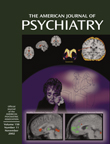Many years ago, public health and mental health were separated, probably so that mental health could achieve full status with other diseases. Later, mental health and substance abuse were separated, probably for the sake of substance abuse, which tended to be ignored by mental health. Public health methods had massive success in the developed world in eliminating or reducing the impact of infectious diseases (at least until the advent of HIV and bioterrorism) and has had some success with chronic diseases (heart disease, cancer). Public health and psychiatry especially merge when organizing efforts at preventing and treating substance abuse. Most diseases managed and treated by psychiatrists have uncertain combinations of genetic diatheses and environmental stress. In the instance of substance abuse, the balance of agent/host/environment permits intervention. That is to say, if you can keep substances away from vulnerable people, primary prevention is possible and early prevention indicated. Surely there is no better population to target than the young. Now comes a book that thoughtfully introduces approaches to the problem of substance abuse in adolescents.
The book developed from a conference in October 1998 convened for the purpose of exploring adolescent substance abuse and early intervention. Most of the chapters come from presentations made at that conference with some added as significant gaps in the conference format were identified. However, this book differs from many books coming from such conferences because of its consistent format and superb editing. Where there are repetitious issues among the chapters they are acknowledged, and reference is made to earlier or later chapters. In addition, each chapter starts by defining the problem, discusses evidence or research-based issues, and ends with an excellent summary. Each chapter is very well referenced.
The editors start by taking on the issue of “confrontation” as the only acceptable approach to treat substance abuse. They state, “It was a stack of cards. There is not and never has been scientific evidence to support the belief that people with substance abuse disorders show abnormally high levels of primitive defense mechanisms such as denial.” Throughout the book the emphasis is on the fact that early intervention is especially possible in adolescence. The transtheoretical model (stages of change model) of DiClemente and Prochaska provides an orientation for some of the discussions of interventions.
The book is divided after the introduction into three parts: Background and Context: Theory, Developmental, and Measurement Considerations; Empirical Illustrations: Clinical Applications and Brief Interventions; and Future Directions, a short final section emphasizing the importance of transdisciplinary research. Each chapter is so well done that I almost hesitate to single out individual chapters. Part 2 of the book will be of most interest to clinicians, but the background and context chapters are well worth the time to read. Chapters on motivational enhancement for alcohol-involved adolescents, alcohol skills training for college students, and integrative behavior and family therapy are excellent reviews of “how to do this.” There is an important chapter on comorbid disorders that should be read by every professional who works with adolescents. A sign of the times is the chapter on the high utility of the Internet for information and treatment.
This book may well stir up some conflict in the field. There is conflict about sex education between those who believe in such education and those who believe that in some way sex education gives adolescents license to begin sexual activity. The latter group wishes there to be no such educational offerings or only offerings that exclusively endorse premarital chastity. There is a parallel conflict in substance abuse treatment regarding total abstinence as the only acceptable treatment approach and the harm reduction models described in parts of this book. This work will not resolve the issue of pluralistic approaches, but it does have evidence-based approaches as its strength.
This is an excellent book in all respects. It is very readable (though not a quick read) and shows careful, even meticulous editing. All mental health professionals who work with adolescents and their families will find it of great value.

